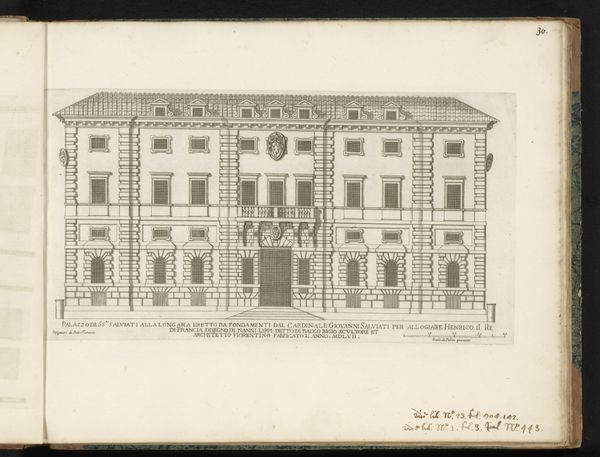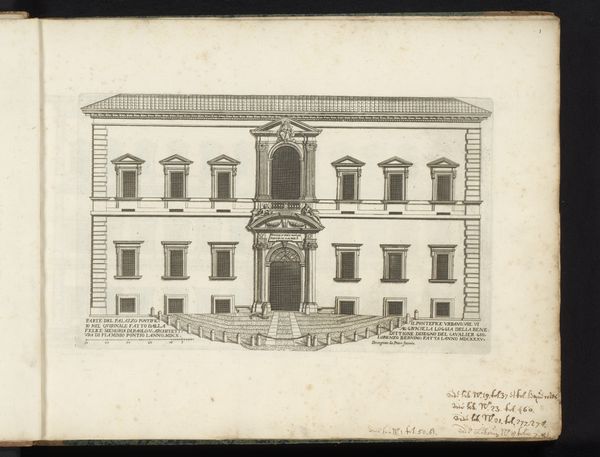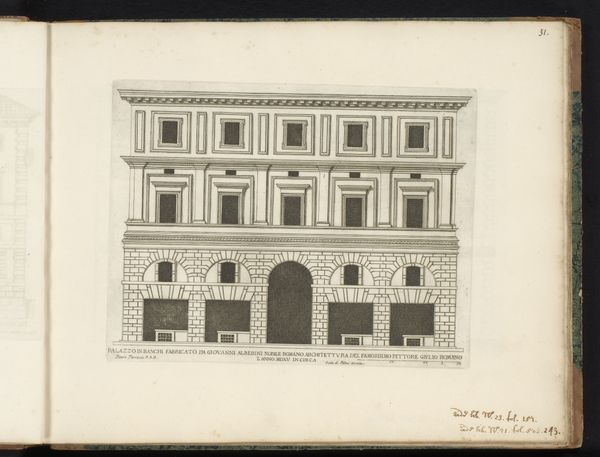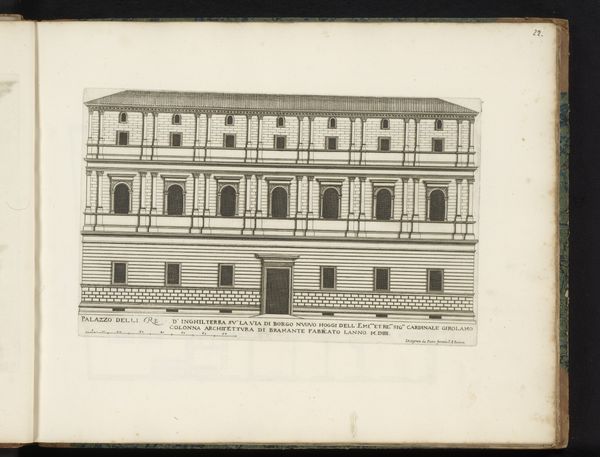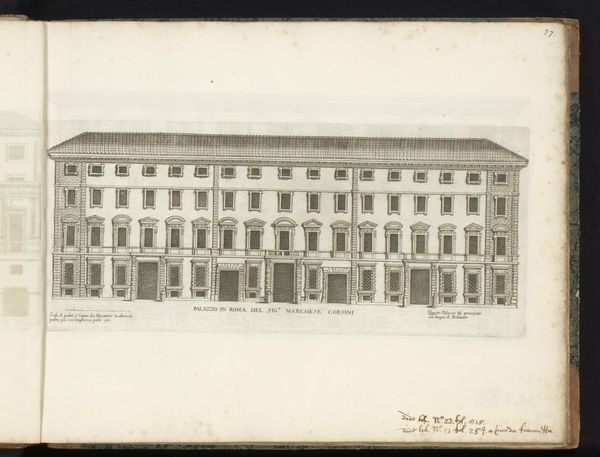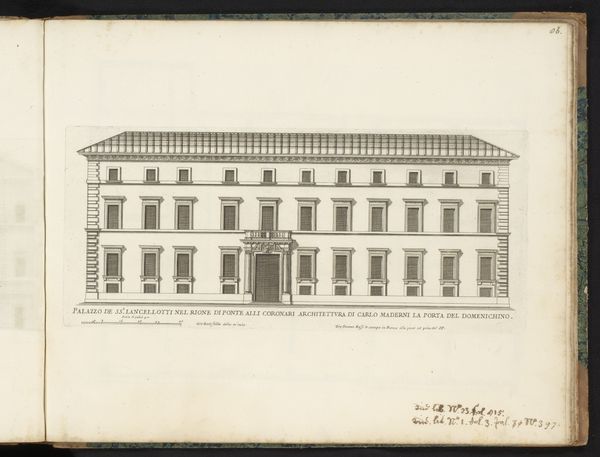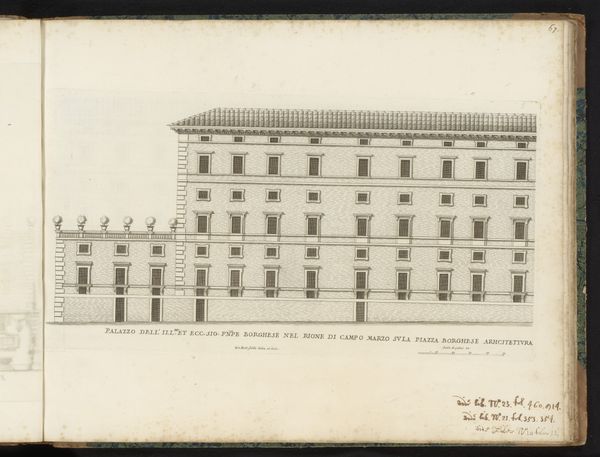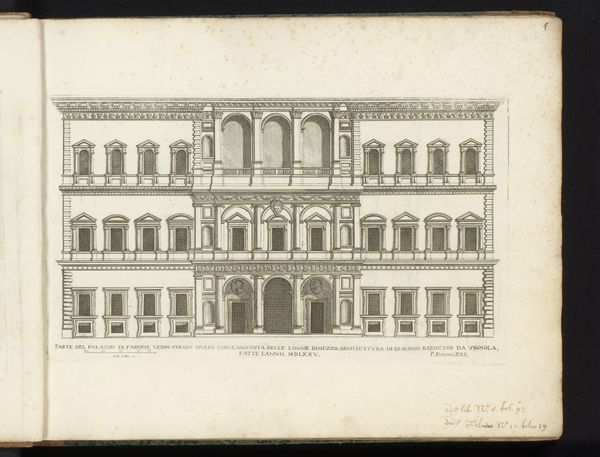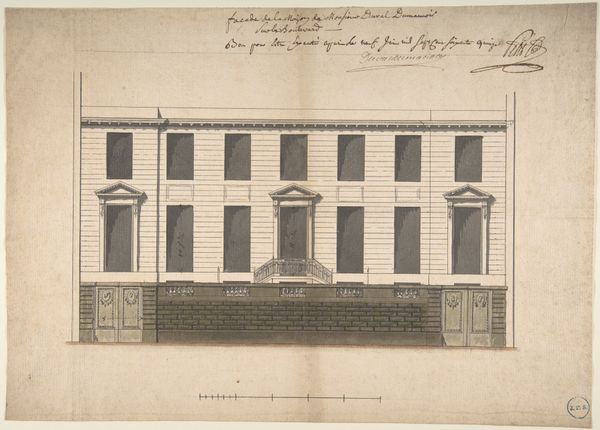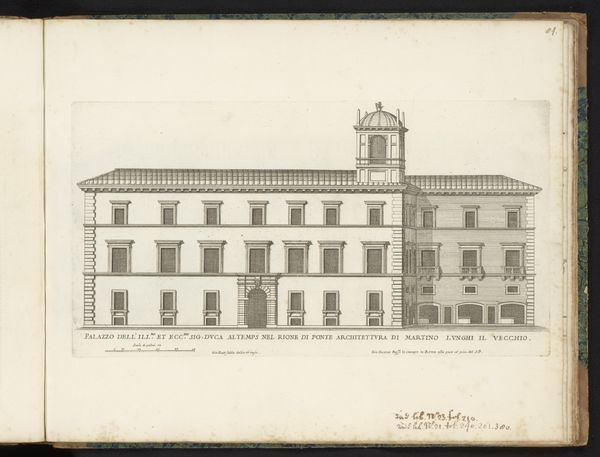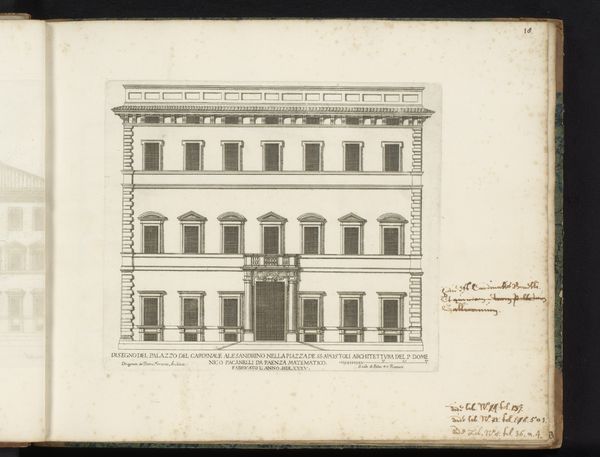
drawing, etching, paper, ink, architecture
#
drawing
#
baroque
#
etching
#
paper
#
ink
#
geometric
#
line
#
cityscape
#
architecture
#
building
Dimensions: height 230 mm, width 374 mm
Copyright: Rijks Museum: Open Domain
Curator: We're looking at Giovanni Battista Falda's "Façade van Palazzo De Torres-Lancellotti," a drawing made after 1655, held at the Rijksmuseum. Editor: Immediately striking! The stark linearity and repetition of the architectural elements create a mood that is both grand and slightly sterile, wouldn't you say? Curator: Precisely. Note how Falda uses etching and ink on paper to present this cityscape. The strong lines define the Baroque architectural details with geometric precision. The very structured composition speaks to a desire for order. Editor: Yes, the structure is impeccable. One can also consider how this image functioned within its time. These architectural prints were circulated among wealthy patrons. What did it mean to display such control? How did such images reinforce certain power structures? Curator: Good questions. From a formalist perspective, the relationships between positive and negative space—the solid building versus the voids of the windows—creates an interesting visual tension. Also, notice how the perspective is flattened. The building is presented almost as a two-dimensional plane, inviting us to read it as a system of signs and relationships, not merely a representation of reality. Editor: But, of course, the building itself *is* a statement. These palazzi functioned as assertions of power, physical manifestations of dynastic strength and social hierarchies. Images like these help to amplify such statements, reproducing and circulating idealized visions of power. Curator: Indeed, though I can’t help but also appreciate how this graphic, abstracted presentation renders it something beyond its purely social context. Editor: I understand. Viewing this artwork, it's intriguing to consider how an image of architecture—so deliberate and constructed—can offer insights into artistic intention and cultural values. It's both beautiful and calculated. Curator: I agree, a dialogue between aesthetics and history certainly enriches our understanding.
Comments
No comments
Be the first to comment and join the conversation on the ultimate creative platform.
